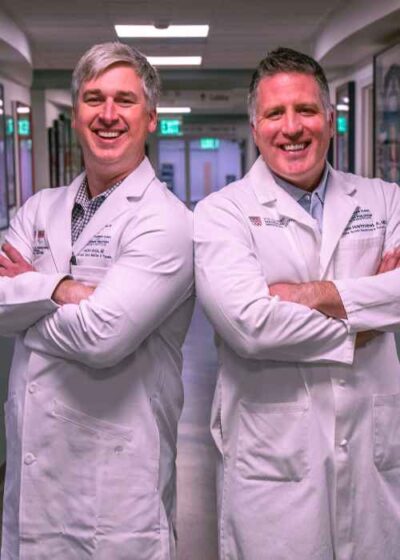Bunion Specialists
Are you experiencing pain while walking and swelling around the big toe? If so, you may be experiencing pain caused by bunions. Bunions cause an abnormal bump on the inside of the foot that causes severe pain, swelling, or decreased movement of the big toe. Less severe cases of bunions can be treated therapeutically. Foot specialists, Doctors Thomas Haytmanek and Jonathon Backus, provide diagnosis and treatment for patients in Vail, Aspen, and the surrounding Denver, Colorado communities who are experiencing difficulty due to the presence of a bunion. Contact The Steadman Clinic’s Sports Foot and Ankle team today!

What are Bunions?
Bunions are a common foot condition and source of foot pain and discomfort for millions of people. They develop due to an imbalance in foot mechanics, and the great toe starts to crowd the lesser toes. The abnormal foot mechanics cause a bump on the inside of the foot. Abnormal foot mechanics, and ultimately bunions can be caused by tight shoe wear, genetic factors, or repetitive stress causing degenerative changes. A similar condition can also occur on the outside of the foot, referred to as a bunionette.
What are symptoms of bunions?
Bunions are often painful and make walking and daily activity difficult for some individuals. The skin and tissue around the bunion is often swollen, red, and inflamed. Severe bunions sometimes decrease the movement of the big toe. The pain and tenderness make it very difficult to wear shoes or find shoes that fit comfortably.
How are bunions diagnosed?
Our physicians will ask a series of questions and perform a thorough physical exam of the foot. Our team will perform x-rays of the foot in a weight bearing fashion to properly evaluate the foot structure. If bunion correction is needed, the x-rays guide the proper treatment plan. Advanced imaging (MRI or CT) is typically not needed but in some cases may be used to rule out other conditions.
Do bunions require surgery?
In milder cases, non-surgical remedies can be helpful. Conservative treatments include wearing wider shoes, shoe/boot modifications, anti-inflammatory medications, anti-inflammatory cream, and even bracing or taping. All these are used to help reduce symptoms and make the bunion more manageable.
What are the surgical treatment options for bunions?
In severe cases, surgery may be needed to remove the bunion and correct the alignment of the great toe. A number of surgical treatments are available for the removal of a bunion. Typically, bunion removal surgeries will involve a bunionectomy which is shaving of the bump. The surgery also involves balancing the soft tissues around the great toe. In most cases osteotomies, or bone cuts, are needed in addition to simply removing the bump. These bone cuts decrease the risk of recurrence of the bunion and correct the mechanics of the foot. There are many different types of osteotomies and our orthopaedic surgeons choose the best osteotomy for each patient depending on their x-rays.
What is the recovery following bunion surgery?
Surgical intervention is typically done as outpatient surgery (meaning no overnight hospital stay). A nerve block is often used to minimize pain after surgery in addition to oral medications. The foot is wrapped and the patient is placed in a hard sole (postoperative) shoe. Depending on the surgery performed, a period of 4-6 weeks of non-weight bearing is possible. Some patients can weight bear almost immediately, but this is determined on an individual basis by the orthopedic surgeon. It is absolutely essential that patients follow the protocol for post-operative recovery as set forth by our team as it is a crucial part of the healing process. To prevent bunions from recurring, patients will need to find comfortable shoes that provide adequate room and movement of the toes.